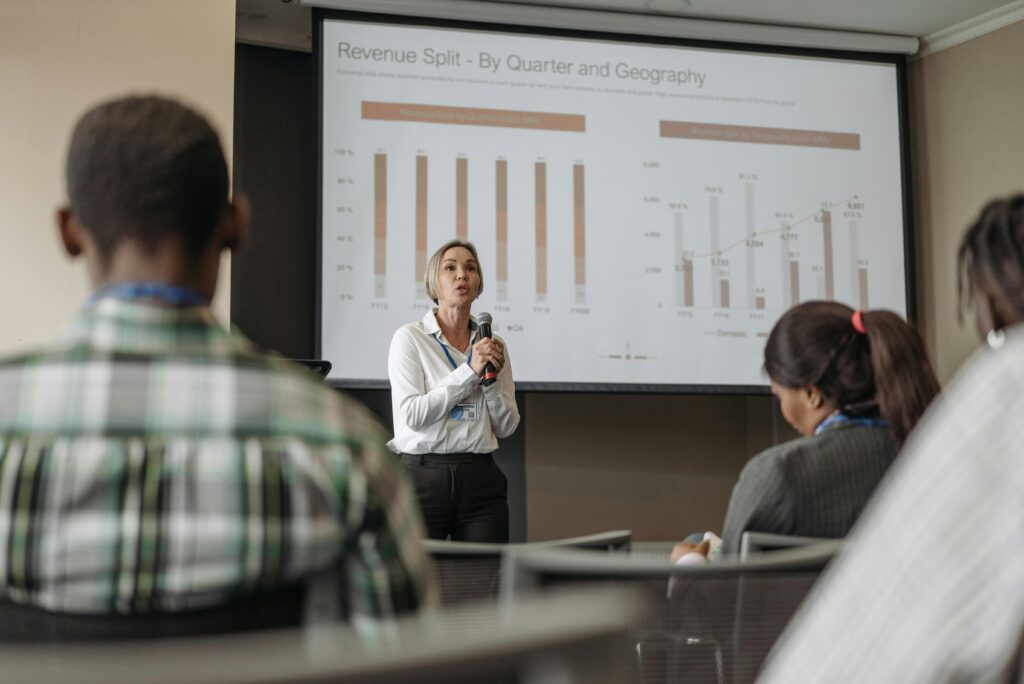How Much Can an App Make: Complete Earnings Potential Guide
Aug 01, 2025

How Much Can an App Make: Complete Earnings Potential Guide
Mobile app revenue hit $613 billion globally in 2023, yet the median app earns just $87 annually.
This stark contrast reveals the most important truth about app economics: earning potential depends
entirely on strategy, not luck.

Having analyzed revenue data from over 5,000 mobile applications and consulted with developers
earning anywhere from $50 monthly to $50 million annually, I can tell you exactly what separates the
winners from the wishful thinkers. The apps making serious money aren’t necessarily the most innovative
—they’re the ones that understand their market, optimize their monetization, and execute with precision.
The earnings ceiling for apps is virtually unlimited, but the floor is zero. Understanding what determines
which side of that equation you land on changes everything.
App Earnings Potential by Category
Revenue potential varies dramatically across different app categories, with some offering clear paths to significant earnings while others struggle with monetization.
Gaming Apps: The Revenue Champions
Mobile Gaming Revenue Ranges:
- Hyper-casual games: $10,000 - $500,000 annually
- Puzzle and casual games: $50,000 - $2,000,000 annually
- Mid-core games: $500,000 - $10,000,000 annually
- AAA mobile games: $5,000,000 - $100,000,000+ annually
Revenue Model Breakdown:
- In-app purchases: Generate 79% of mobile gaming revenue
- Advertising: Provides 18% of revenue (primarily hyper-casual)
- Premium sales: Accounts for 3% (declining but still viable for quality titles)
Success Factors:
- Player retention: Top games maintain 40%+ Day 1 retention
- Average revenue per user: $15-50 annually for successful titles
- Whale monetization: Top 1% of spenders generate 60-80% of revenue
- Live operations: Regular content updates essential for sustained earnings
Example: PUBG Mobile generated $2.6 billion in revenue in 2023.
Social and Communication Apps
Revenue Challenges and Potential:
- Network-dependent: Require millions of users for significant revenue
- Long monetization runway: Often 18-24 months before meaningful income
- High development costs: $200,000 - $5,000,000 for competitive features
- Winner-take-all dynamics: Market leaders capture disproportionate value
Revenue Ranges:
- Niche social platforms: $25,000 - $500,000 annually
- Regional social apps: $100,000 - $5,000,000 annually
- Global platforms: $50,000,000 - $10,000,000,000+ annually
Monetization Strategies:
- Advertising: Requires 1M+ monthly active users for significant revenue
- Premium subscriptions: $3-15/month for advanced features
- Creator economy: 10-30% commission on creator monetization
- Virtual goods: Effective in community-focused platforms
Education and E-Learning Apps
Educational App Revenue Potential:
- Language learning apps: $100,000 - $50,000,000+ annually
- Professional skill development: $50,000 - $10,000,000 annually
- K-12 educational tools: $25,000 - $5,000,000 annually
- Higher education platforms: $100,000 - $100,000,000+ annually
Revenue Model Analysis:
- Subscription models: $5-50/month depending on target audience
- Course sales: $10-500 per course with higher value for professional training
- Institutional licensing: $10,000 - $1,000,000+ per educational institution
- Freemium conversion: 2-8% typical conversion rates
Success Examples:
- Duolingo: $490+ million annual revenue with 15M+ paying subscribers
- MasterClass: $200+ million annual revenue with celebrity instructors
- Coursera: $415+ million annual revenue serving 100M+ learners
- Udemy: $500+ million annual revenue with marketplace model
Educational Application Development Revenue

Educational apps represent one of the highest-potential categories for sustainable revenue growth.
Market Opportunity Analysis
Global E-Learning Market:
- Market size: $315 billion in 2023, growing to $645 billion by 2030
- Mobile learning segment: 43% of total e-learning market
- Corporate training: $366 billion annually with 15% mobile adoption
- K-12 digital education: $8.38 billion market growing 16% annually
Revenue Drivers:
- Subscription recurring revenue providing predictable income
- High lifetime value with education users showing strong retention
- Corporate sales offering significant revenue per customer
- Global market access through digital distribution
- Content scalability with minimal marginal costs
Educational App Development Costs
Investment Requirements:
- Simple educational games: $25,000 - $100,000
- Interactive learning platforms: $100,000 - $500,000
- Comprehensive LMS systems: $500,000 - $2,000,000+
- AI-powered adaptive learning: $1,000,000 - $5,000,000+
Ongoing Operational Costs:
- Content development: $50,000 - $500,000 annually
- Technology maintenance: $20,000 - $200,000 annually
- Marketing and user acquisition: $100,000 - $2,000,000+ annually
- Customer support: $30,000 - $300,000 annually
Revenue Model Optimization
Subscription Pricing Strategies:
- Individual learners: $5-30/month for general education
- Professional development: $20-100/month for career advancement
- Corporate packages: $50-500/month per user for enterprise
- Educational institutions: $5,000 - $100,000+ annual licenses
Content Monetization:
- Course marketplace: 10-50% commission on instructor sales
- Certification programs: $50-500 per certification
- Tutoring services: $25-100/hour with platform commission
- Study materials: $10-100 per resource pack
Productivity and Business Apps

B2B applications often offer the highest revenue potential per user.
Enterprise Software Revenue
Business Application Ranges:
- Simple productivity tools: $50,000 - $1,000,000 annually
- Industry-specific solutions: $500,000 - $20,000,000 annually
- Enterprise platforms: $10,000,000 - $1,000,000,000+ annually
B2B Pricing Models:
- Per-user subscriptions: $10-500/month per user
- Usage-based pricing: Scales with customer success and growth
- Enterprise contracts: $100,000 - $10,000,000+ annually
- Professional services: Additional 20-50% revenue through implementation
Customer Lifetime Value:
- SMB customers: $5,000 - $50,000 lifetime value
- Mid-market: $50,000 - $500,000 lifetime value
- Enterprise: $500,000 - $10,000,000+ lifetime value
SaaS Revenue Optimization
Growth Metrics:
- Monthly recurring revenue growth of 15-25% for healthy SaaS
- Customer acquisition cost should be recovered within 12 months
- Lifetime value should be 3-5x higher than acquisition cost
- Churn rates below 5% monthly for sustainable growth
Health and Fitness Apps
Wellness applications tap into growing health consciousness and spending.
Health App Revenue Potential
Category Performance:
- Fitness tracking: $25,000 - $5,000,000 annually
- Nutrition and diet: $50,000 - $10,000,000 annually
- Mental health and meditation: $100,000 - $100,000,000+ annually
- Medical and telemedicine: $500,000 - $1,000,000,000+ annually
Monetization Approaches:
- Premium subscriptions: $5-30/month for advanced features
- Corporate wellness: $5-50 per employee per month
- Healthcare partnerships: Revenue sharing with providers
- E-commerce integration: Health product sales and commissions
Market Leaders:
- MyFitnessPal: $200+ million annual revenue
- Calm: $100+ million annual revenue
- Headspace: $100+ million annual revenue
- Teladoc: $2+ billion annual revenue
Revenue Timing and Growth Patterns

Understanding when and how app revenue develops over time.
Revenue Development Timeline
Year 1: Foundation Building
- Months 1-3: $0 - $5,000 (product development and initial launch)
- Months 4-6: $2,000 - $20,000 (user acquisition and optimization)
- Months 7-9: $5,000 - $50,000 (scaling successful strategies)
- Months 10-12: $10,000 - $100,000 (established user base)
Year 2: Growth Acceleration
- Quarter 1: Focus on user retention and lifetime value optimization
- Quarter 2: Expand monetization features and pricing optimization
- Quarter 3: Geographic expansion or platform additions
- Quarter 4: Prepare for scaling challenges and team expansion
Year 3+: Maturation and Optimization
- Revenue optimization: Focus on higher-value customers and features
- Market expansion: New customer segments or geographic regions
- Product expansion: Additional apps or platform extensions
- Exit opportunities: Acquisition discussions or IPO preparation
Growth Rate Benchmarks
Healthy Growth Patterns:
- Month-over-month growth: 15-25% for early-stage apps
- Year-over-year growth: 100-300% for successful apps
- Revenue per user growth: 10-20% annually through optimization
- Market share expansion: Depends on total addressable market size
Geographic Revenue Variations

App earnings potential varies significantly by target market.
Tier 1 Markets (US, UK, Canada, Australia)
Revenue Characteristics:
- Highest ARPU: $20-100 per user annually
- Premium pricing tolerance: Users accept $10-100 monthly subscriptions
- Credit card adoption: 80%+ users have payment methods enabled
- Competition intensity: Requires exceptional user experience
Revenue Characteristics:
- iOS dominance: 60-70% of mobile revenue despite lower market share
- Enterprise focus: B2B apps perform exceptionally well
- Subscription acceptance: High willingness to pay for ongoing value
Tier 2 Markets (Germany, France, Japan, South Korea)
Revenue Potential:
- Moderate ARPU: $10-40 per user annually
- Cultural adaptation required: Local features and language essential
- Payment preferences: Local payment methods increase conversion 2-3x
- Regulatory compliance: GDPR, local privacy laws affect operations
Emerging Markets (India, Brazil, Indonesia, Mexico)
Volume vs. Revenue Trade-offs:
- Lower ARPU: $2-15 per user annually
- High user volume: 5-10x more potential users
- Local payment methods: Mobile payments and carrier billing essential
- Price sensitivity: $0.99-4.99 maximum for most transactions
Emerging Market Strategies:
- Advertising-focused: Higher ad tolerance compensates for lower spending
- Micro-transactions: Very small purchases enabling broader participation
- Local partnerships: Essential for payment processing and marketing
- Offline capabilities: Poor internet connectivity requires thoughtful design
Revenue Optimization Strategies

Specific tactics that increase app earning potential.
Pricing Psychology and Testing
Price Testing Methodologies:
- A/B testing: Different prices for different user segments
- Cohort analysis: Long-term impact of pricing changes
- Geographic pricing: Adjusted pricing for different markets
- Seasonal optimization: Holiday and back-to-school pricing strategies
Psychological Pricing Techniques:
- Anchor pricing: Premium options making standard seem reasonable
- Bundling: Multiple features or time periods for perceived value
- Limited-time offers: Creating urgency for purchase decisions
- Social proof: Showing popularity and user satisfaction
User Acquisition and Lifetime Value
Acquisition Channel Performance:
- Organic (ASO): $0.50 - $5 cost per install, highest retention
- Social media ads: $5 - $30 cost per install, moderate retention
- Search ads: $10 - $50 cost per install, high intent users
- Influencer marketing: $15 - $60 cost per install, varies by niche
LTV Optimization:
- Onboarding improvement: 25% improvement in retention through better first experience
- Feature adoption: Users adopting 3+ features show 5x higher LTV
- Push notification optimization: Personalized messages increase engagement 40%
- Customer success programs: Proactive support increases LTV 60%
Technology and Development Impact on Earnings

Technical decisions that affect long-term revenue potential.
Platform Strategy Revenue Impact
iOS vs. Android Revenue:
- iOS users: Spend 2.5x more per user on average
- Android reach: 3x larger global user base
- Cross-platform development: 40% cost savings with moderate revenue trade-offs
- Web applications: Lower development cost but limited monetization options
Technology Stack Influence
Development Speed vs. Revenue:
- Native development: Highest performance and revenue potential
- React Native/Flutter: 30% faster development, 90% of native revenue
- Progressive Web Apps: 50% lower development cost, 60% of native revenue
- No-code platforms: 70% faster development, limited customization and scaling
Success Stories and Revenue Benchmarks

Real-world examples of apps achieving significant revenue milestones.
Breakout Success Analysis
Instagram (before Facebook acquisition):
- Development cost: $500,000 initial investment
- Revenue timeline: Acquired for $1 billion after 2 years
- User growth: 100 million users at acquisition
- Monetization: Focused on growth over early revenue
WhatsApp (before Facebook acquisition):
- Development cost: $250,000 initial development
- Revenue model: $0.99 annual subscription
- Revenue at acquisition: $20 million annually
- Acquisition value: $19 billion after 5 years
Minecraft Pocket Edition:
- Development cost: $100,000 for mobile port
- Revenue model: $6.99 premium purchase
- Annual revenue: $100+ million from mobile versions
- Success factors: Strong brand and engaged community
Indie Success Stories
Monument Valley:
- Development cost: $1.4 million over 8 months
- Revenue model: $3.99 premium purchase plus DLC
- Total revenue: $14+ million across all platforms
- Success factors: Unique art style and word-of-mouth marketing
Alto's Odyssey:
- Development cost: $200,000 over 18 months
- Revenue model: Premium purchase with ethical monetization
- Revenue performance: $2+ million in first year
- Success factors: Polish, gameplay innovation, and marketing timing
Revenue Forecasting and Planning

Realistic revenue projections based on market data and development investment.
Conservative Revenue Projections
Year 1 Conservative Estimates:
- Simple utility app: $1,000 - $25,000
- Moderate complexity app: $5,000 - $100,000
- Complex application: $25,000 - $500,000
Year 3 Conservative Estimates:
- Simple utility app: $10,000 - $100,000
- Moderate complexity app: $50,000 - $1,000,000
- Complex application: $250,000 - $5,000,000
Optimistic Revenue Projections
Year 1 Optimistic Scenarios:
- Viral consumer app: $100,000 - $5,000,000
- Successful B2B tool: $200,000 - $2,000,000
- Hit mobile game: $500,000 - $50,000,000
Year 3 Optimistic Scenarios:
- Established consumer platform: $5,000,000 - $100,000,000
- Leading B2B solution: $10,000,000 - $500,000,000
- Top mobile game: $50,000,000 - $1,000,000,000+
Risk Factors and Revenue Threats

Understanding what can limit or destroy app revenue potential.
Market and Competition Risks
Competitive Threats:
- Platform changes: iOS/Android updates affecting functionality
- Algorithm changes: App store discovery becoming more difficult
- Big tech competition: Google, Apple, Facebook entering your market
- Copycat applications: Successful features being replicated quickly
Technical and Operational Risks
Scaling Challenges:
- Infrastructure costs: Server expenses growing faster than revenue
- Team scaling: Developer costs increasing with user growth
- Technical debt: Poor early decisions limiting future development
- Security issues: Data breaches destroying user trust and revenue
Actionable Revenue Maximization Framework

Systematic approach to optimizing app earning potential.
Phase 1: Revenue Foundation (Months 1-6)
- Market validation through user research and competitive analysis
- Monetization strategy selection based on user behavior and willingness to pay
- MVP development focusing on core value proposition
- Analytics implementation tracking user behavior and revenue metrics
- Initial optimization based on early user feedback and data
Phase 2: Growth Acceleration (Months 7-18)
- User acquisition scaling through proven channels
- Retention optimization improving user lifetime value
- Feature expansion adding monetization opportunities
- Geographic expansion to higher-value markets
- Team scaling to support growth and development
Phase 3: Revenue Optimization (Months 19+)
- Advanced analytics for sophisticated user segmentation
- Pricing optimization through systematic testing
- Product expansion into adjacent markets or use cases
- Partnership development for revenue diversification
- Exit planning or long-term strategic positioning
The Bottom Line
App earning potential is virtually unlimited, but success requires strategic thinking, market understanding, and execution excellence.
Revenue reality check:
- Most apps earn very little due to poor planning and execution
- Successful apps can generate millions or billions in revenue
- Category selection dramatically impacts earning potential
- Geographic strategy affects both user base and revenue per user
- Monetization timing and optimization determine long-term success
Key success factors:
- Solve real problems for users willing and able to pay
- Choose monetization models aligned with user behavior
- Optimize continuously based on data and user feedback
- Scale systematically without compromising user experience
- Plan for the long term with sustainable growth strategies
Your earning potential depends on:
- Market selection and user willingness to pay
- Product quality and user satisfaction
- Monetization strategy and implementation
- Growth execution and scaling efficiency
- Competition response and market positioning
The apps making serious money aren’t necessarily the most innovative—they’re the ones that
understand their users, optimize their monetization, and execute with precision.
Focus on value creation, optimize based on data, and scale systematically. The earning potential is
there for those who approach it strategically.
